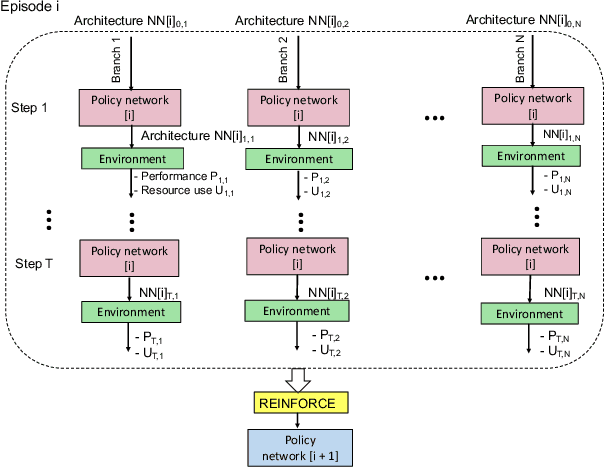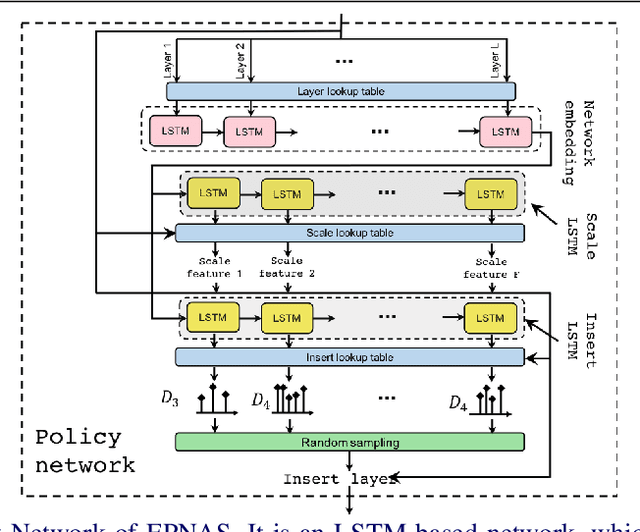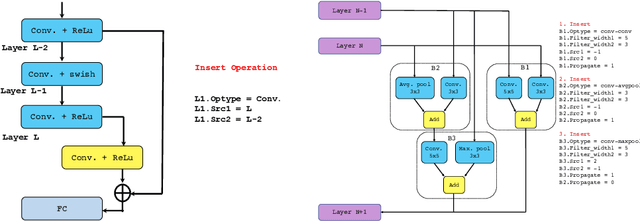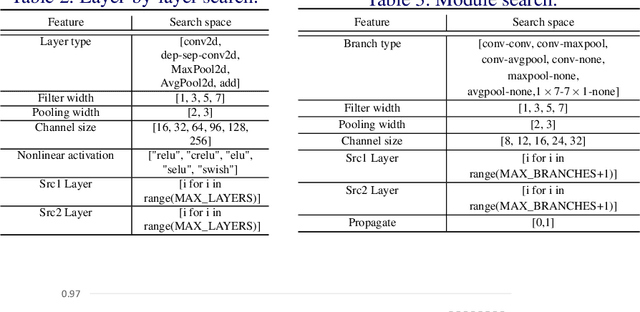EPNAS: Efficient Progressive Neural Architecture Search
Paper and Code
Jul 07, 2019



In this paper, we propose Efficient Progressive Neural Architecture Search (EPNAS), a neural architecture search (NAS) that efficiently handles large search space through a novel progressive search policy with performance prediction based on REINFORCE~\cite{Williams.1992.PG}. EPNAS is designed to search target networks in parallel, which is more scalable on parallel systems such as GPU/TPU clusters. More importantly, EPNAS can be generalized to architecture search with multiple resource constraints, \eg, model size, compute complexity or intensity, which is crucial for deployment in widespread platforms such as mobile and cloud. We compare EPNAS against other state-of-the-art (SoTA) network architectures (\eg, MobileNetV2~\cite{mobilenetv2}) and efficient NAS algorithms (\eg, ENAS~\cite{pham2018efficient}, and PNAS~\cite{Liu2017b}) on image recognition tasks using CIFAR10 and ImageNet. On both datasets, EPNAS is superior \wrt architecture searching speed and recognition accuracy.
 Add to Chrome
Add to Chrome Add to Firefox
Add to Firefox Add to Edge
Add to Edge